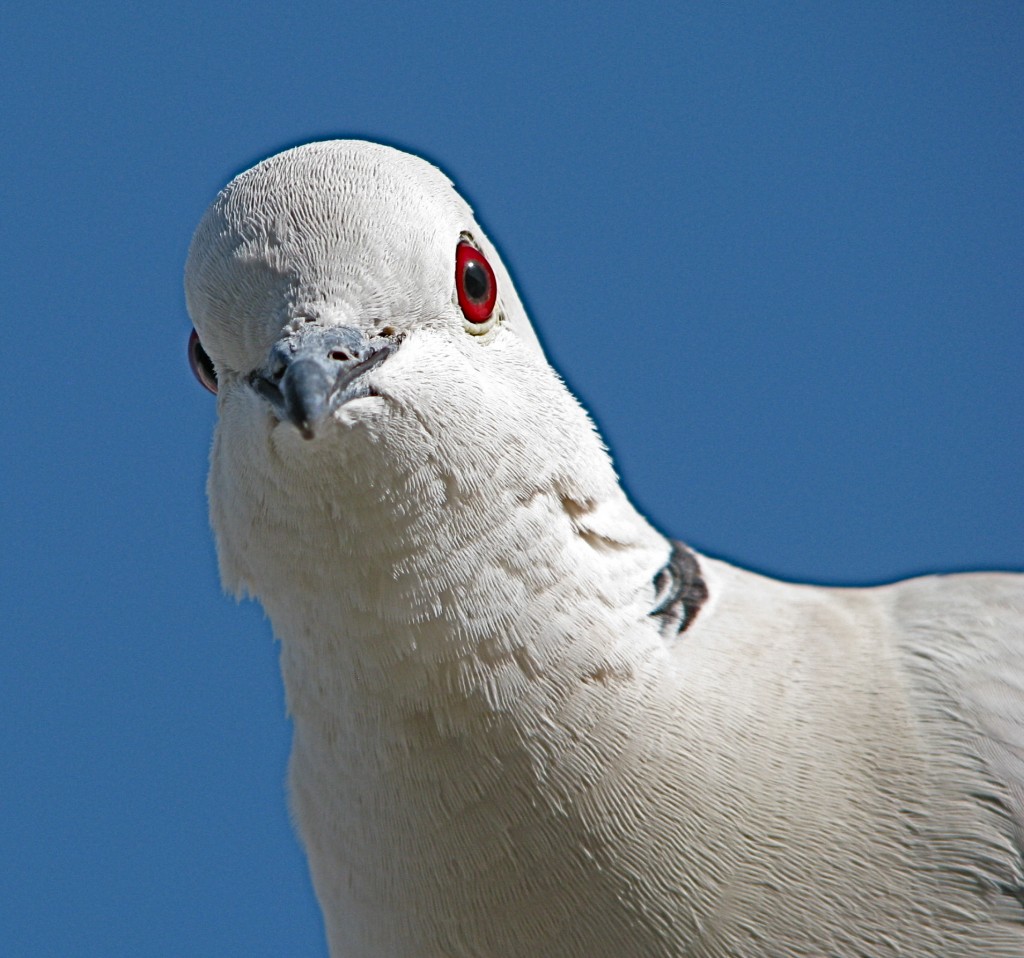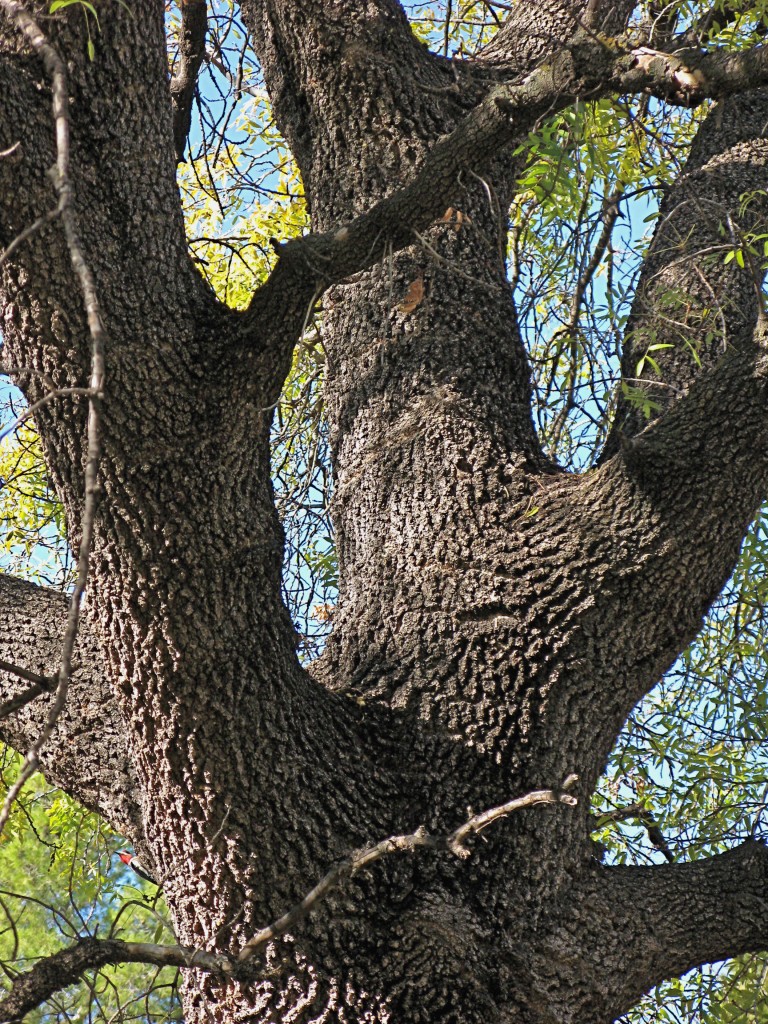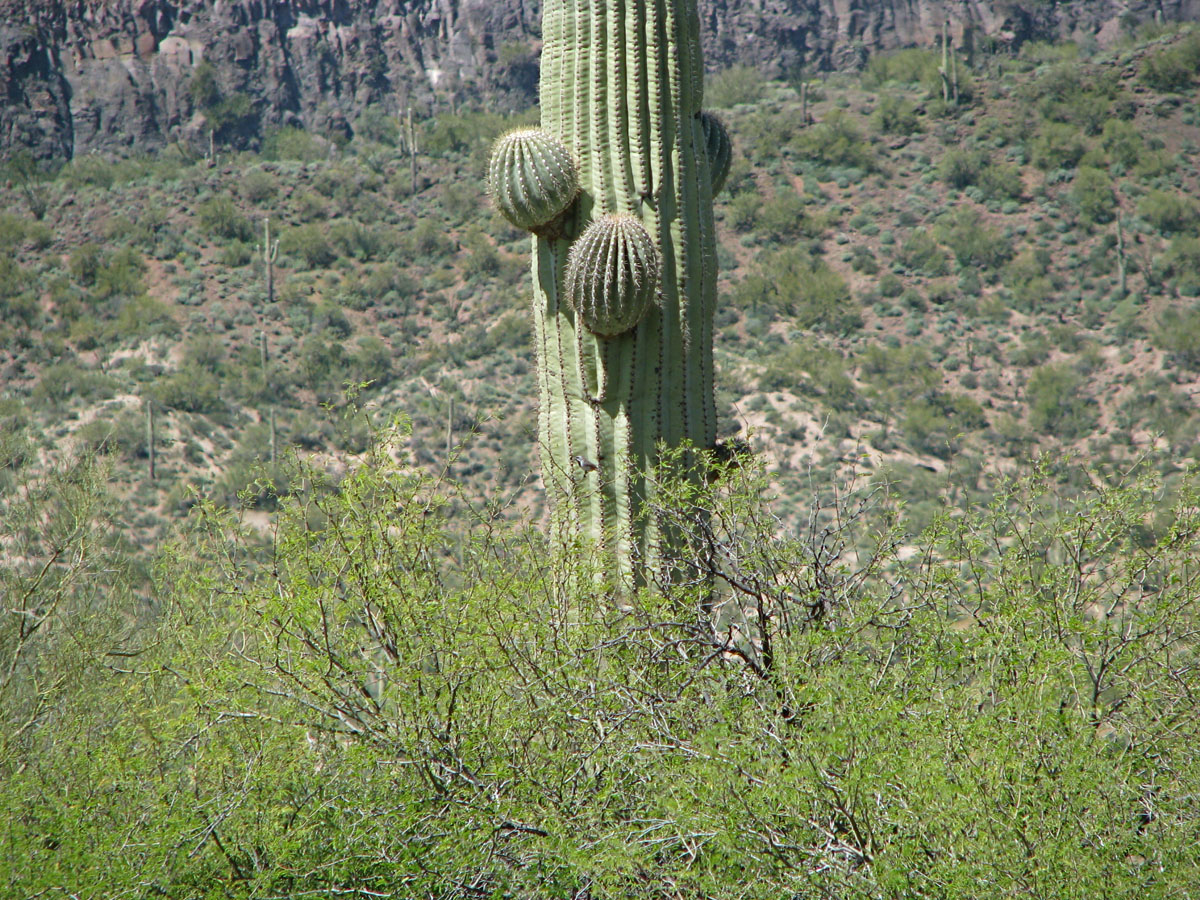A while back, I posted about my process for making horned lizard bowls (affectionately known as Horny toads) from clay. Here are the next few steps, all shown in one photo, below.
To the right is a now completely assembled and textured horned lizard, in the leather hard stage, drying. In the center is a bone dry and partially tinted lizard — note that the clay is now a lighter buff. I use a sponge and mute slip colors to give the textured skin a mottled appearance, like a horned lizard’s camo-flecked pelt. (You may remember that slip is a paint-like water and clay mixture with mineral oxides and stains added.) The colors, which look very contrasty and unnatural at this point, will calm down and become more subtle during firing. Normally, adding slip is done no later than the leather hard stage to avoid flaking, but the refined slips I use 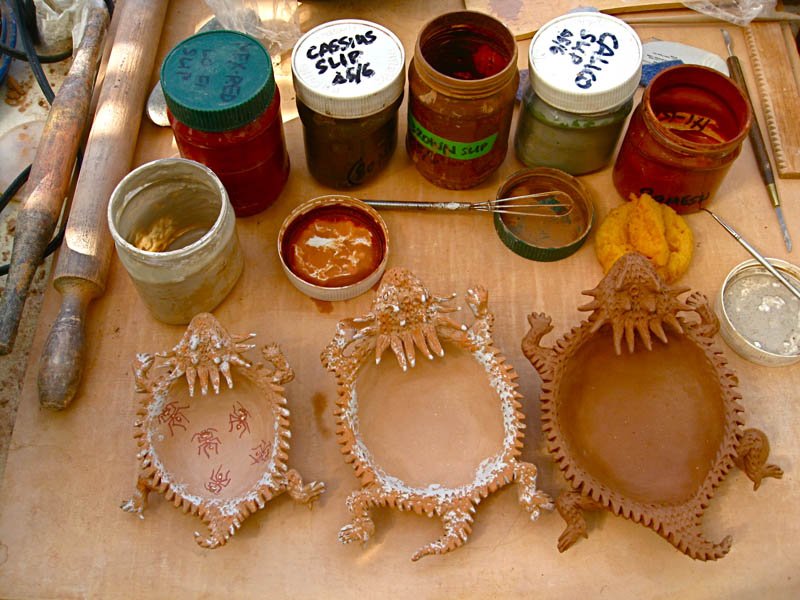 have no problems hanging on. On the left is a completed horned lizard awaiting its first, or bisque, firing. I’ve added the ants with a very fine brush (a 00 squirrel liner), also in slips. This is a touchy job: the fine work requires a fairly long process of painting delicate lines — the more ants, the longer the work time — and a lot of handling of a bone dry piece with pointy sticky-outy bits. If you’ve worked with clay you know that this bone-dry phase (where all the liquid water has evaporated from the clay body) is when a piece is at its most fragile. On top of that, if something like a horn, a toe or a leg snaps off, it
have no problems hanging on. On the left is a completed horned lizard awaiting its first, or bisque, firing. I’ve added the ants with a very fine brush (a 00 squirrel liner), also in slips. This is a touchy job: the fine work requires a fairly long process of painting delicate lines — the more ants, the longer the work time — and a lot of handling of a bone dry piece with pointy sticky-outy bits. If you’ve worked with clay you know that this bone-dry phase (where all the liquid water has evaporated from the clay body) is when a piece is at its most fragile. On top of that, if something like a horn, a toe or a leg snaps off, it 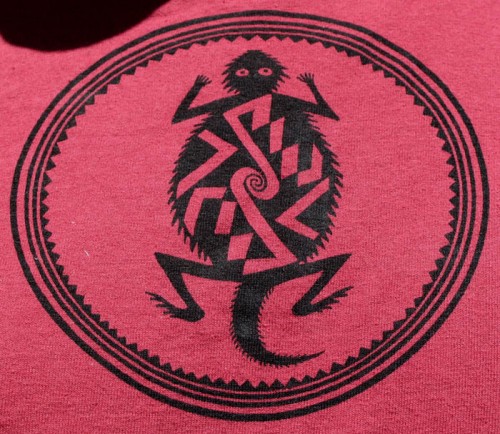 is difficult or even impossible to reattach it trustworthily. Not that… ahem… that ever happens, or if it did I would admit it… These guys, Regal Horned Lizards, have 10 coronal horns, and so I have to be careful while “anting” them.
is difficult or even impossible to reattach it trustworthily. Not that… ahem… that ever happens, or if it did I would admit it… These guys, Regal Horned Lizards, have 10 coronal horns, and so I have to be careful while “anting” them.
<< A favorite teeshirt of E‘s, a mimbres horned lizard design. Nice depiction of the lateral spiny scales along its flanks.
A note on the ants. They are Pogonomyrmex, a genus of harvester ants, called Pogos for short, understandably. These are the guys you see issuing forth from their nests, with every seed and scrap of vegetation gleaned clean to the grit for a 5 meter radius around the entrance. They have a potent and painful bite, but despite that, they are Horned lizards’ most favoritest thing to eat. It’s tough to capture their essence in a sludgy, opaque medium like clay slip, because they’re waxy like tropical fruit: sort of clear but satiny, too. I can get close to the effect by depicting them with highlights in white on their red bodies.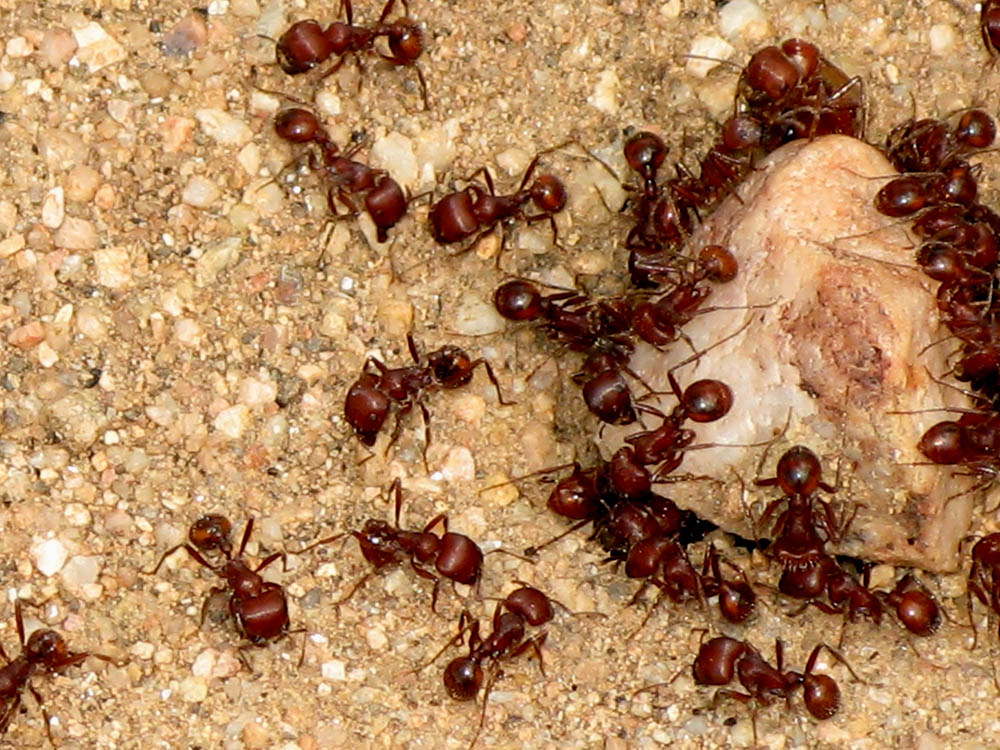
Pogonomyrmex ants photographed at Kartchner Caverns State Park (A.Shock) >>
They’re extraordinary animals: physically very strong, and focused in their social pursuits, with big bolster-like heads (which appear to be larger than their abdomens) sporting impressive grasping mouthparts you would have no trouble seeing with your naked eye, if you got close enough. Or, you can just click on the photo above — which I call Pogos Agogo — and look at the solitary ant to the lower left.
If you love excellent up-your-nose close-up photos of ants (and who doesn’t?) check out the site of Alex Wild, myrmecologist, or studier of ants. Better still click here to see his photos of Pogo ants in particular, to get a much better view of the fearsome mouthparts than in my photo above.
Etymological side-bar. In Homer’s Iliad, Achilles’ posse were the Myrmidons. μύρμηξ, myrmex, is ant in Greek.
You can see finished horned lizard bowls in the Three Star Owl Shop.
